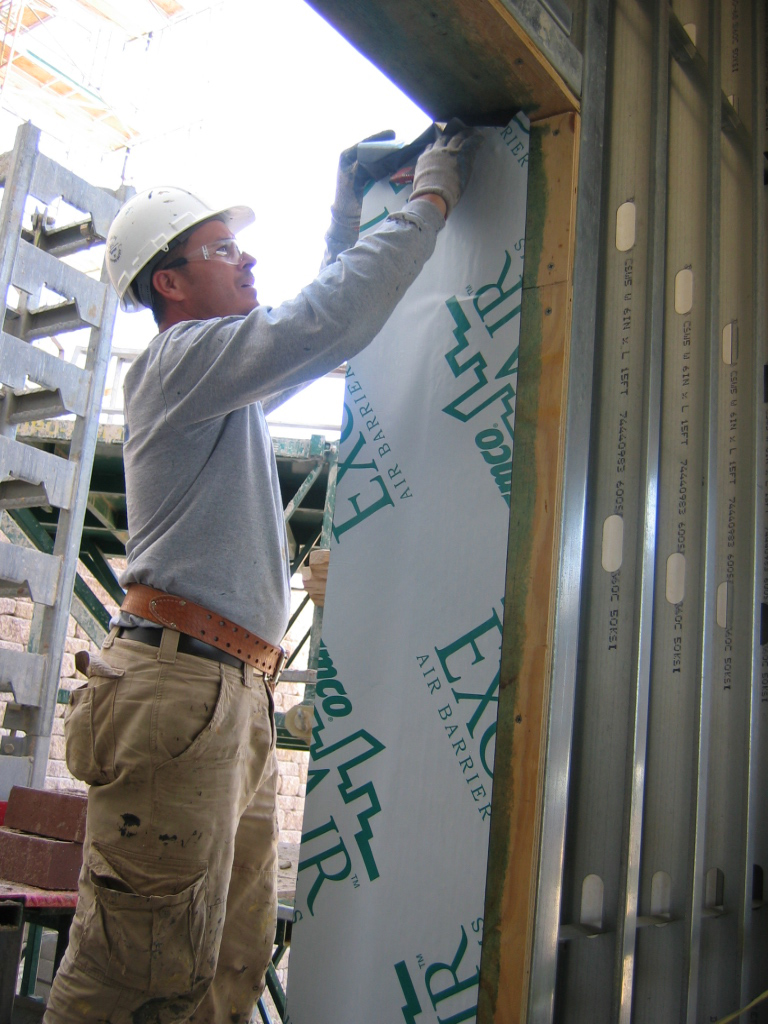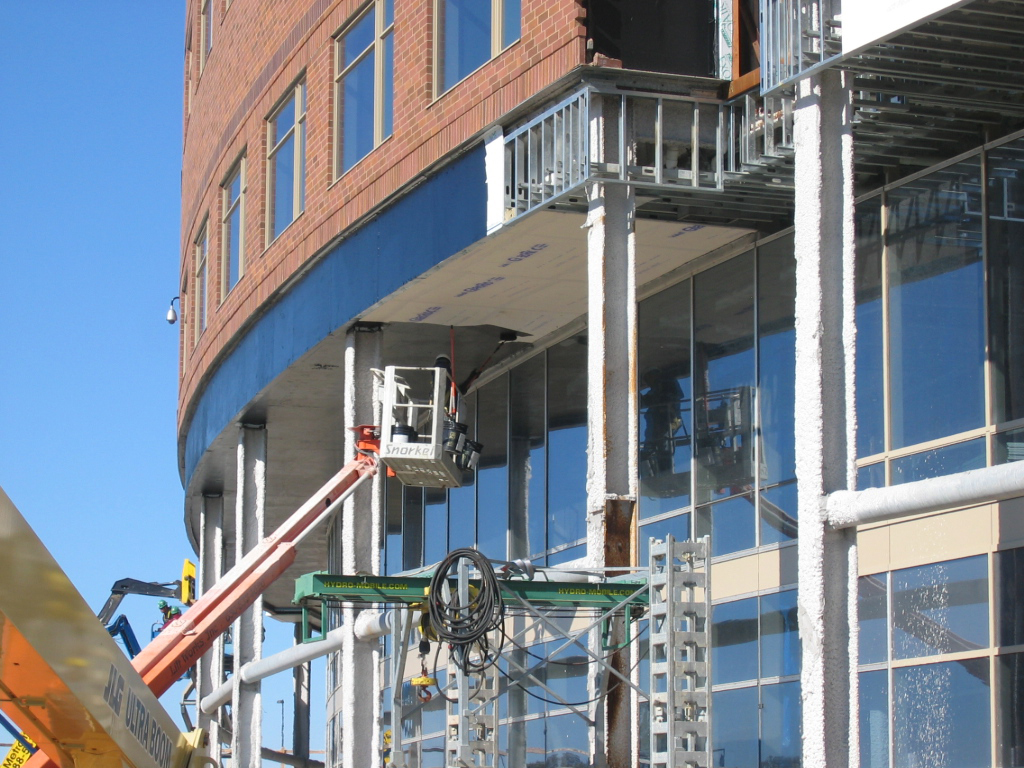Sherman Hospital in Elgin, Illinois began operations on July 7, 1888 in a two story house donated by prominent businessman and drug store owner, Henry Sherman. The hospital at that time had only one operating room and four patient beds. Flash forward to 1999 and the hospital had grown to become one of the largest health care facilities in Chicago with a total of 353 beds. The building facility had reached its capacity once again and with some parts of the building structure dating back to 1917, the hospital board determined that building an entirely new replacement facility would be the best option for continuing their excellent patient care.
When the hospital broke ground on the new 156-acre replacement facility in June 2006, they were preparing to utilize some groundbreaking features, the largest of which would be a 15-acre geothermal lake that would also be used for water retention.
In order to further the hospital’s commitment to energy conservation, the architects designing the structure called for the use of an air and vapor barrier, applied to the outside of the construction before the masonry, in order to protect the building envelope from air and moisture infiltration/exfiltration. This air barrier system was specified to ensure additional cost-saving, energy efficiency, and sustainability.
Streich Corporation was selected to install this air and vapor barrier. Based in both Indianapolis and Justice/Chicago, Streich is a specialty contractor for new and existing structures installing waterproofing, air barriers, damp proofing, clocking coatings, pedestrian and traffic coatings, and fire stopping contracting throughout the Midwest.
The air barrier installation began in August of 2007, with sealant application both below-grade in the basement area and above-grade on the hospital’s exterior walls. Bob Mahaney, CEO for Streich, describes the substrate condition when they began the job. “Since it was new construction we just needed to make sure that the substrate was clean and free of dust by inspecting and approving the surface. Any defects were corrected by the other responsible trades.” The below-grade construction was concrete and the above-grade construction was metal studs and exterior sheathing.
 The below-grade basement area and the plaza deck area were coated with hot fluid-applied waterproofing Tremco TREMproof 6100 Hot, Fluid-applied Waterproofing Membrane and TREMDrain Drainage Protection Board. One member of the three-to-five-man crew heated the TREMproof6100 in a Rubber Master Melter double oil-jacketed boiler, delivering it in five-gallon metal buckets to the rest of the waiting crew. It was then applied to a thickness of 120 mils using squeegees and rollers. Following an almost immediate cure, the TREMDrain was then installed.
The below-grade basement area and the plaza deck area were coated with hot fluid-applied waterproofing Tremco TREMproof 6100 Hot, Fluid-applied Waterproofing Membrane and TREMDrain Drainage Protection Board. One member of the three-to-five-man crew heated the TREMproof6100 in a Rubber Master Melter double oil-jacketed boiler, delivering it in five-gallon metal buckets to the rest of the waiting crew. It was then applied to a thickness of 120 mils using squeegees and rollers. Following an almost immediate cure, the TREMDrain was then installed.
Streich began the above-grade exterior application by detailing or treating the seams of the new exterior sheathing with Tremco ExoAir Termination Mastic. The numerous windows, also known as punch openings, throughout the structure received special attention. Using nine-inch rollers, the Streich team applied Tremco ExoAir #10 primer at 250 square feet to the gallon onto the outside and vertical interiors of each punch opening. Next, Tremco ExoAir 110 Self-Adhered Air & Vapor Barrier Membrane was applied to the primer. ExoAir 110 is a 40 mil sheet “peel-and-stick” type membrane that has a release paper that is removed before the membrane is adhered to the primer. The window unit is then attached to the ExoAir 110.
At the curtain wall openings, the crew also used Tremco Proglaze ETA Engineered transition Assembly to fill any gaps between the window and the ExoAir 110. Rick Cuttaia of Tremco described the Proglaze product: “Proglaze ETA is an engineered transition assembly that incorporates a 40 durometer translucent silicone rubber extrusion to span and seal transitions. It is mechanically attached to the window or wall assembly with a lock-in dart into an aluminumn adaptor with a pre-engineered race to receive the dart.”
For this project, the typical layers of construction consist of exterior sheathing, air barrier, insulation, a cavity space, then brick or masonry on the outside. Proglaze ETA is attached to the ExoAir 110 in order to tie into the glazing system, which is usually a piece of metal called a pressure bar. Cuttaia describes a unique feature of Proglaze, “The Proglaze is ribbed on one side to engineer the amount of splicing material needed to create a vacuum for a good, tight seal. This solution not only provided a continuous seal between the barriers and the openings, it prevented a costly redesign to the structure.” He continues, “An aluminum adaptor with a receptor kind of shaped like a U is adhered to the ExoAir building side using butel tape and screws through the punch outs. The ridged side of the Proglaze ETA has a dart that slides right into the receptor. Spectrem 1, an ultra-low modulus silicone sealant product, is put into the adapter and the dart is pressed into the channel opening. In this particular case, the glazing contractor was using a pressure bar system, so Tremco and Streich positioned the aluminum adaptor so that the flat end of the Proglaze ETA was against the pressure bar, allowing the glazier to further tighten the pressure bar with the aid of Spectrem 1 to hold it in place. After the masonry was completed, the glazer placed a backer rod between the finished window assembly and the masonry and sealed it with Spectrem 1 to complete the final seal of the perimeter.”
While completing this detailing process, Streich identified large vertical gaps between the curtain wall units and the wall assembly. Mahaney explains, “A curtain wall is a large panel of glass that extends from the ceiling to floor, basically a glass wall. There were eight to 10 of these glass walls, measuring over 100 feet each.” The gaps were wide on these areas so the typical six to eight inch Proglaze ETA wasn’t enough to bridge the gap. The Streich crew was able to bridge these larger gaps by fusing two pieces of the Proglaze together. To do so, the crew placed 50 foot lengths of Proglaze down, overlapping the two strips about an inch and then splicing them together with Tremco Spectrem 1 silicon sealant, sealing the splice using rubber rollers. This splicing process took place either on the job site or in their facilities and often allowed the product to cure over a weekend before application.
 The building itself was huge; Mahaney estimates that they have sealed approximately a quarter of a million square feet of wall space. There was no need to prime the exterior surface for the application of Tremco ExoAir 120 Fluid-Applied Air Barrier Membrane. ExoAir 120 is a water-based, seamless monolithic elastomeric membrane designed to be spray-applied or rolled (with a slightly different viscosity) onto exterior above-grade walls to create a fully adhered air and vapor barrier.
The building itself was huge; Mahaney estimates that they have sealed approximately a quarter of a million square feet of wall space. There was no need to prime the exterior surface for the application of Tremco ExoAir 120 Fluid-Applied Air Barrier Membrane. ExoAir 120 is a water-based, seamless monolithic elastomeric membrane designed to be spray-applied or rolled (with a slightly different viscosity) onto exterior above-grade walls to create a fully adhered air and vapor barrier.
The product was applied with a Streich-modified Graco co-spray system. One line of the spray contains the ExoAir 120 product and it is cross-fired once it leaves the nozzle with a one percent calcium chloride emulsion mixed with water.
The product was sprayed in a left to right and then up and down pattern to achieve a proper milage of roughly 30 mils in each pass. The crew measured the wet mil thickness to make certain they had achieved proper coverage of 60 wet mils using a mil gage supplied by Tremco. Mahaney recalls, “The specified 45 dry mils were achieved in one application, using two passes, and measured carefully.”
Because of the size and long duration (over 18 months) of the project, it was necessary for the crew to work during the winter season. They worked in tented areas approximately 80 feet wide by 12 feet high, using the masonry scaffolding or standard scaffolding to support the tent structure. The General Contractor supplied heat to the tented areas, allowing the application of the product with no extra heaters. The application crew members wore 3M respirators and safety glasses while spraying and standard three-point harnesses from Miller Fall Protection were used where it was required.
Streich Corporation, in conjunction with Tremco, was able to deliver a sealed building envelope that met not only the energy standards of the architects, but strict environmental standards through the use of solvent-free materials. The project was audited by the Air Barrier Association of America (ABAA) and testing was done at various phases of construction to ensure critical specifications were met, and the project was certified by the ABAA. In addition, due to the excellent coordination and communication between the General Contractor, the air barrier applicator, the glazier and Tremco, they were able to manage the issue of the gaps in the exterior without sacrificing air barrier efficiency and preventing a costly redesign of the structure and without having to call in yet another sub-contracted company to solve the issue.
Once the new structure is completed sometime in 2009, Sherman Health will have a showcase 156-acre property, including the geothermal lake that demonstrates their sincere commitment to energy efficiency and sustainability.